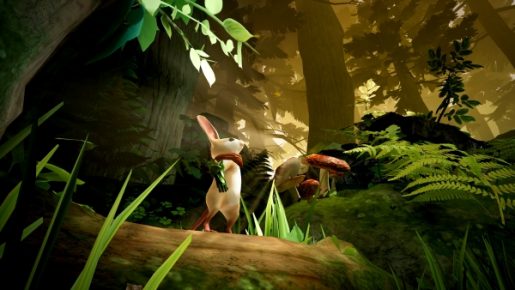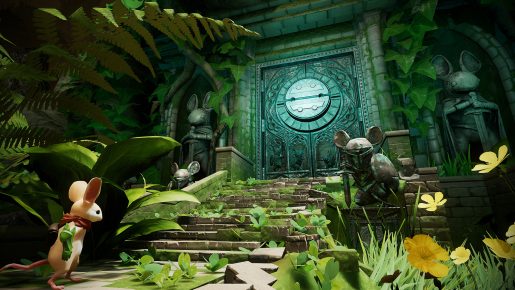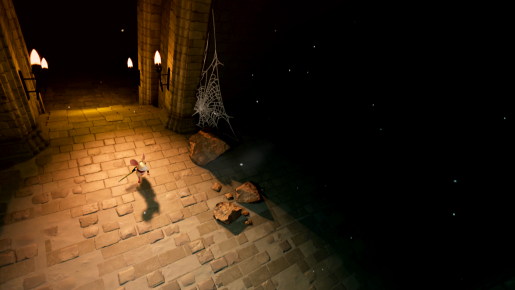In a lot of ways Moss was the biggest surprise at Sony’s E3 media showcase. The adorable platformer came out of nowhere, quickly captured many player’s hearts and looked to be one of the stronger PlayStation VR titles. Initial impressions were strong, with it being one of the better titles I played at E3, quickly making it one of the most anticipated titles for the platform. Now that Moss is in the wild, is it a must for PlayStation VR owners or is it just a cute but underwhelming experience?
Moss’ story is essentially a prologue for a larger adventure, which causes there to be two different and distinct plots lines. The first establishes core concepts, such as Quill being chosen by “The Reader,” the stone she finds being part of a larger narrative and other destiny related things, with the other focusing on rescuing her uncle Argus. Moss uses this generic story as a way to establish Quill’s growth and give her the confidence, with the aid of The Reader, to tackle whatever challenges await her in the future. It’s a nice experience that is elevated by a more grounded narrative.
In addition to having a cute and clever story, the same can be said about the gameplay. The average puzzle in Moss boils down to awareness, familiar mechanics and combining multiple pieces. All these skills are important, since the puzzles rely on understanding what is going on, over thinking outside of the box. This makes it perfect for younger players looking for a challenge or older players that want an experience similar to Ratchet and Clank.
So, for example, one puzzle involves moving enemies so rocks are places a specific way, with another requiring players to hit certain switches to open the path required to hit the exit. Those looking for an additional challenge can track down all the fragments. These are moderately hidden scrolls that typically involve solving another puzzle or thinking outside the box.
Besides puzzles there are enemies to fight and vanquish with Quill’s sword. Despite having a fairly simple combat system, there are a number of ways for players to emerge victorious. For instance, Quill can dodge, strafe and slice down foes or you, as The Reader, can take control or use enemies against each other. This can be a little tricky, since it requires motion and potentially paying attention to multiple places at once, though it works well if you have the right set up and/or know what you’re doing.
Since this is a PlayStation VR title, the headset and motion controls offer some unique elements in Moss. Some of the hardest puzzles can be solved by simply looking around. A number of fragments are hidden in places that can’t be seen unless you look at it from a specific angle. This can make it frustrating, as you’ll likely miss something, while also highlighting how traditional games can benefit from this technology. In addition to finding secrets, the headset allows players to look at hard to get to locations or seemingly important places to determine if they’re worth exploring. There were a couple spots I thought had fragments and, thanks to the headset, realized did not.
As for motion, it allows players to interact with objects, causing them to move, break or things of the like or shift the world to solve puzzles. What stands out in Moss is the ability to interact with Quill. Players can heal her by grabbing her, moving the curser around Quill causes her to move, she can be pet and will get angry at you for doing it excessively, with there even being the ability to give her a high five. Even if they’re unremarkable, it highlights Moss as an experience, over being a platformer with some gimmicks.
Moss is easily one of the better PlayStation VR titles and a must for anyone who loves cute animals, puzzle games or just want to see how PlayStation VR can enhance traditional experiences. That being said, keep in mind that it isn’t the longest adventure and offers little to no replay value. If these things aren’t a problem for you, then you can’t go wrong with Moss.
[Editor’s Note: Moss was reviewed on the PS4 platform. The game was provided to us by the publisher for review purposes.]



